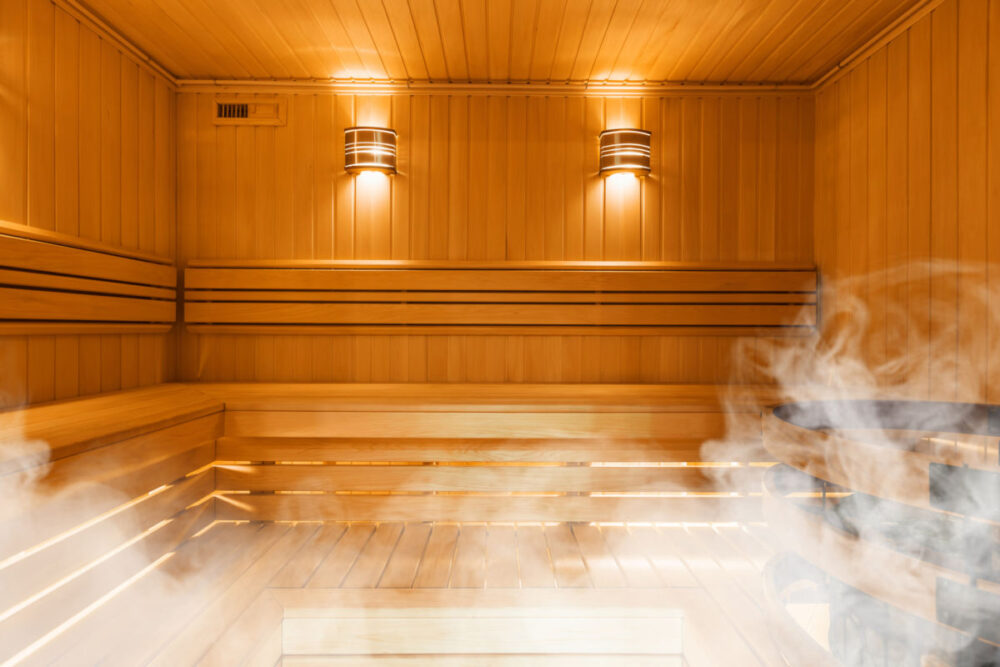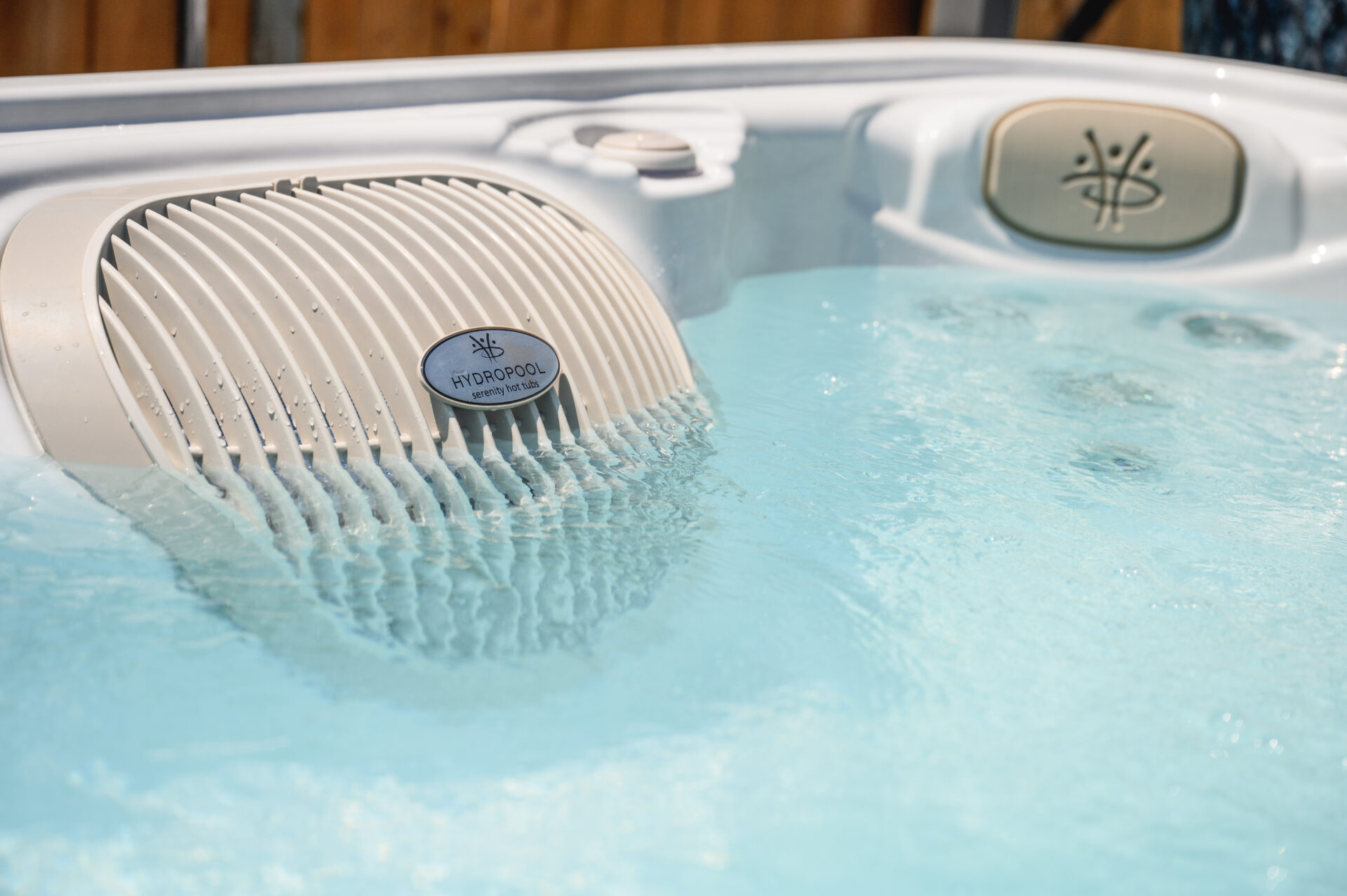The Science Behind Sauna Health Benefits

In order to truly understand the health benefits a sauna provides, it’s important to not only understand the outcomes, but the mechanisms that cause those outcomes. It is the only way to truly know the value and the validity of the benefits that are being claimed. In this article we will dive deep into the science of sauna, as well as, proper use best practices. Let’s get into it.
The Science of Hormesis
Hormesis is a positive biological response to negative stimuli. A good example of this is exercise. Running and lifting tears and breaks down our muscle tissue. This triggers a hormetic response in which our bodies build the muscle back even stronger than what it was before.
Sitting in a sauna can trigger a similar response. It gets very hot in a sauna. Those high temperatures raise our internal body temperature, triggering a similar biological response that benefits us in many different ways. The main mechanism behind this is heat shock proteins. We’ll dive into that further below.
Sauna Heat Shock Proteins Explained
The body can sense when we are under extreme stress. When we are exposed to extremely high temperatures for more than a few minutes, the body sends protection in the form of heat shock proteins. Heat shock protein’s main goal is to keep our bodies from overheating and keep us alive. In doing so, it causes all our bodily systems to work more efficiently.
These proteins have been linked to various health benefits, such as an improved immune system, healthier and stronger skin, improved neurovascular health, and improved cardiovascular health, which means that saunas may reduce the risks of high blood pressure.
Sauna Improves Cardio and Neurovascular Health
One of the ways using a sauna can provide so many benefits is by improving the cardio and neurovascular systems. A recent study has shown that passive heat therapy has a huge positive impact on arterial stiffness and the circulatory system as a whole. Our blood is one of the core lifegiving systems. Any improvement at all is certain to have lasting and prominent effects.
Health Benefits of Using a Sauna

In recent years, there has been a growing conversation about the physical and mental health benefits of using a sauna. There have been a lot of myths spread leading to confusion about the benefits of a sauna and the proper way to use it. Now that we know the science, let’s get into the health benefits.
Using a Sauna Can Benefit Overall Health
A study on sauna use as a lifestyle practice to extend healthspan found that using a sauna can cause the body to trigger many of the same physiological and protective responses that are triggered by exercise, which means you can get many of the various overall health benefits offered by a good workout by simply using a sauna.
Those benefits may include protection against neurodegenerative disease and cardiovascular disease, preservation of muscle mass, and even reduction of all cause mortality. So yes, regular sauna sessions can improve your overall health.
Studies Show Sauna Use Results in Increased Healthspan and Lifespan
Here are some illuminating statistics from the linked study that can help shed light on the findings:
- The risk of all-cause mortality was 40% lower among frequent sauna users compared to infrequent users, independent of conventional risk factors.
- For men who reported using the sauna two to three times per week, the risk of cardiovascular disease (CVD) mortality was 27% lower than among men who reported using the sauna only once weekly.
This is an important statistic because critics of previous studies have said that the findings were skewed because those who have access to a sauna are likely to have better than average health as a baseline. Because this study compared infrequent vs frequent sauna users, the merit of the evidence can no longer be denied
Using a Sauna Can Benefit Mental Health
Exposing your body to high temperatures for even 20 minutes can induce a stress response, which causes your brain to release endorphins that improve your mood and overall sense of well-being. Similar to accomplishing a goal or completing a difficult task.
And despite the stress response being triggered, sauna sessions have been found to reduce levels of cortisol — the stress hormone — in your body, reducing anxiety.
Symptoms of Depression Linked to Chronic Full Body Inflammation
While depression is primarily an issue that affects you mentally, it can also manifest with physical symptoms. It has been found that individuals who suffer from depression often have elevated biomarkers of full body inflammation. When most people think of inflammation, they think of joint and muscle pain. While those are the most obvious signs of inflammation, it has been found that we can have inflammation in any tissue from the brain to the digestive tract.
A 2009 study found that this chronic activation of the body’s inflammatory response shows a strong correlation to the development of depressive symptoms. It is believed that things like poor diet and lack of exercise are leading to chronically inflamed tissue that causes sluggishness, lethargy, low mood, and lack of ambition.
Using a Sauna Reduces Chronic Full Body Inflammation
So how can using a sauna a few times per week help with your depression? Well it’s simple. It’s been found by researchers that the heat and moisture in steam rooms stimulate blood flow in the body, which helps heal irritated, inflamed and swollen tissues, thereby reducing the depressive symptoms connected to inflammation.
How Sauna Benefits Skin
There are many claims to how sauna use can benefit your skin. Releasing toxins is probably one of the biggest claims from the pseudoscience community. The truth is, using a sauna is beneficial to your skin. Just in a way that doesn’t sound as exciting.
Combine Exfoliating Scrub with Sauna Use
Skin becomes irritated and breaks out because of clogged pores. The benefit saunas bring to skin care is that they make you sweat profusely. Which allows pores to open that are tougher to open. This is the perfect opportunity to break out the cleanser and clean those hard to reach pores.
Sauna May Be Suitable Replacement for Exercise for Those Who Can’t
It is well established that sitting in a sauna will raise your heart rate. A new 2021 study suggests that it may be a suitable replacement for cardio for those who need to lower blood pressure but are unable to exercise. This study found that participants who exercised for 15 minutes and used the sauna for 15 minutes received the same cardiovascular benefits as those who only used the sauna for 15 minutes. Very promising!
Sauna Before or After a Workout?

‘Should I use the sauna before or after a workout?’ is a very popular and common question. The short answer is both. Sauna use is incredibly beneficial and will benefit you using it before and/or after a workout. For those who are short on time or want to optimize their workout routine, we will get into the benefits of each below.
Benefits of Sauna Before Workout
Sauna use can mimic a moderate to intense cardio workout. Studies have shown that prolonged sessions in the sauna raise core body temperature, increase blood flow, and raise heart rate to approximately 120 beats per minute. Combine that with mood elevation and sitting in the sauna is an optimal pre-workout routine.
Benefits of Sauna After Workout Recovery
As we have said before, heat and moisture in saunas stimulate blood flow in the body, which helps heal irritated, inflamed and swollen tissues. Not only is this a benefit to mental health, it will greatly benefit healing muscles that are damaged from strenuous exercise.
So, Should You Use a Sauna Before or After Workout?
The short answer is either or both. Sauna provides great benefits before and after a workout. What you decide to do will ultimately depend on the amount of time you have to devote to a workout, the type of workout, and the availability of access to a sauna.
What No Sweating in the Sauna Could Mean

A general concern of people getting into the sauna lifestyle is “why don’t I sweat in the sauna?”. There are many potential causes and solutions to this. We will outline a few below,
Dehydration Can Stop You From Sweating in the Sauna
A common cause for lack of sweat production is lack of water in your body. Be sure to drink plenty of water regularly. Especially when planning to spend time in the sauna. If your body was a car, water is the oil. Don’t blow the engine because you aren’t getting oil changes.
Dry Sauna Can Make It Appear as if You Aren’t Sweating
A lot of times when in a dry sauna, water evaporates directly off of your skin. This can make it appear as though you aren’t sweating, even when your body is working as perfectly as it should. If you are spending time in the dry sauna, a lack of sweat is not something to be immediately concerned with.
Some Thyroid Conditions Limit Sweat Production
As the heading states, some thyroid conditions can stop your body from producing sweat. If the issue is prolonged or you are experiencing other symptoms, consult your doctor. At the very least, they can run a check up and give you a clean bill of health. It’s always better to be safe than sorry when it comes to managing your body.
How to Use The Sauna Properly

As with anything that causes a hormetic response in the body, There is a window for effectiveness. Too little and there are no benefits. Too much and it has the potential to be toxic or damaging. This means that you should be aware of the proper way to use a sauna before subjecting yourself to high temperatures.
How Long Can You Stay In The Sauna
You may be wondering how long you should stay in the sauna. To get the maximum health and life extending benefits, studies show that sauna sessions should be greater than 19 minutes. Those who use saunas as a test of endurance or as a meditative practice stay longer and can routinely do 45-50 minute sessions. Ultimately, you should listen to your body. If you start to get lightheaded or dizzy, get out immediately.
What is a Safe Sauna Temperature Range
Temperature is very important to pay attention to when using the sauna. A temperature that is too high is dangerous and puts you at risk, while a temperature that is too low stops you from getting all the benefits. To get the most out of your sauna sessions, keep the temperature somewhere between 158ºF – 212ºF for a traditional sauna and 113ºF – 140ºF for an infrared sauna.
How Many Sauna Sessions Per Week?
Studies show that the benefits of sauna increase with use. To get maximum benefit, it is recommended to have 4-7 sessions per week. Though, you can increase or decrease as you desire. Just listen to your body, and contact a physician with any health concerns related to extended use.
Benefits of Sauna in the Morning
The benefits of using a sauna in the morning are similar to the benefits of using sauna before a workout. Sauna use mimics a moderate to intense cardio workout. Using a sauna has also been shown to elevate mood and create a feeling of being energized. Combine those to strong benefits, and you have an optimal morning routine.
Conclusion to Our Sauna Fitness, Health, and Proper Use Guide
Sauna use has had known benefits since their inception thousands of years ago. Because of the lack of study equipment and the fact that they were verbally passed between generations, those benefits were always thought of as wive’s tales and stories of grandeur. Now that we have a ton of peer reviewed scientific data, it seems as though the wive’s tales had merit. We believe that using a sauna is more than just sitting in a hot room with a timer. It is a connection to healing power that affects the mind, body, and spirit.
That is why we will only stock top quality, finnish saunas from Helo. For more information, contact us directly. Start your journey to healing today.











